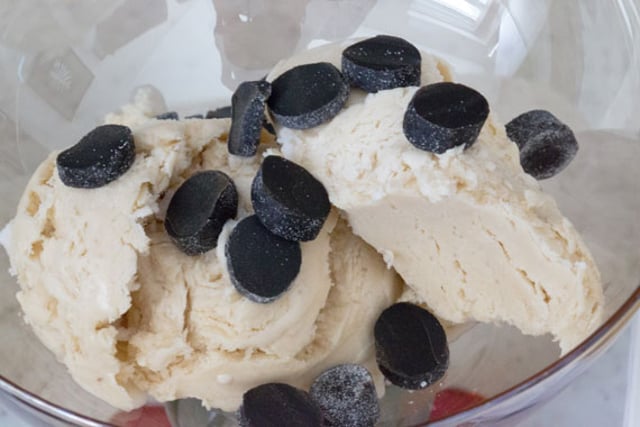Makes around 1 pint, or 0.57 litres
Preparation: 10 minutes
Total: 10 minutes plus freezing time
Reminder
This recipe uses raw egg so the ice cream should not be served to anyone who shouldn't eat raw egg.
Ingredients
2 egg yolks, preferably organic for a richer colour
65g (¼ cup) granulated sugar, preferably raw (pure) cane sugar
2 tsp ground liquorice (raw liquorice powder)
½ tsp vanilla essence
240ml (1 cup) whipping cream
120ml (½ cup) whole milk (3-4 percent)
1 tbsp sweet liquorice syrup
Method
1. Whisk the egg yolks and sugar in a mixing bowl until you have a light mixture, about two minutes.
2. Mix in the ground liquorice and vanilla essence.
3. Pour in the cream and milk and whisk to blend.
4. Pour the mixture into an ice cream machine with the paddle running.
5. When almost set pour in liquorice syrup (optional) and transfer to a tub for freezing.
Without an ice cream machine
If you have not got an ice cream machine, continue whipping after stage three for another two or three minutes, then transfer to an ice cream container. Cover the surface of the ice cream with cling film (food wrap) and freeze. Remove the mixture from the freezer every half hour. Fork over the mixture thoroughly and return to the freezer. Repeat this step until the mixture is thoroughly frozen, which will normally take two or three hours.
Tips
– You can buy raw liquorice powder and liquorice syrup online.
– Add some liquorice syrup for an extra liquorice taste.
– If you are serving the ice cream on its own, garnish with some soft sea salt flakes and sliced salt liquorice.
– You might prefer our recipe for saltlakritsglass (salty liquorice ice cream).
Recipe courtesy of John Duxbury, founder and editor of Swedish Food.



 Please whitelist us to continue reading.
Please whitelist us to continue reading.